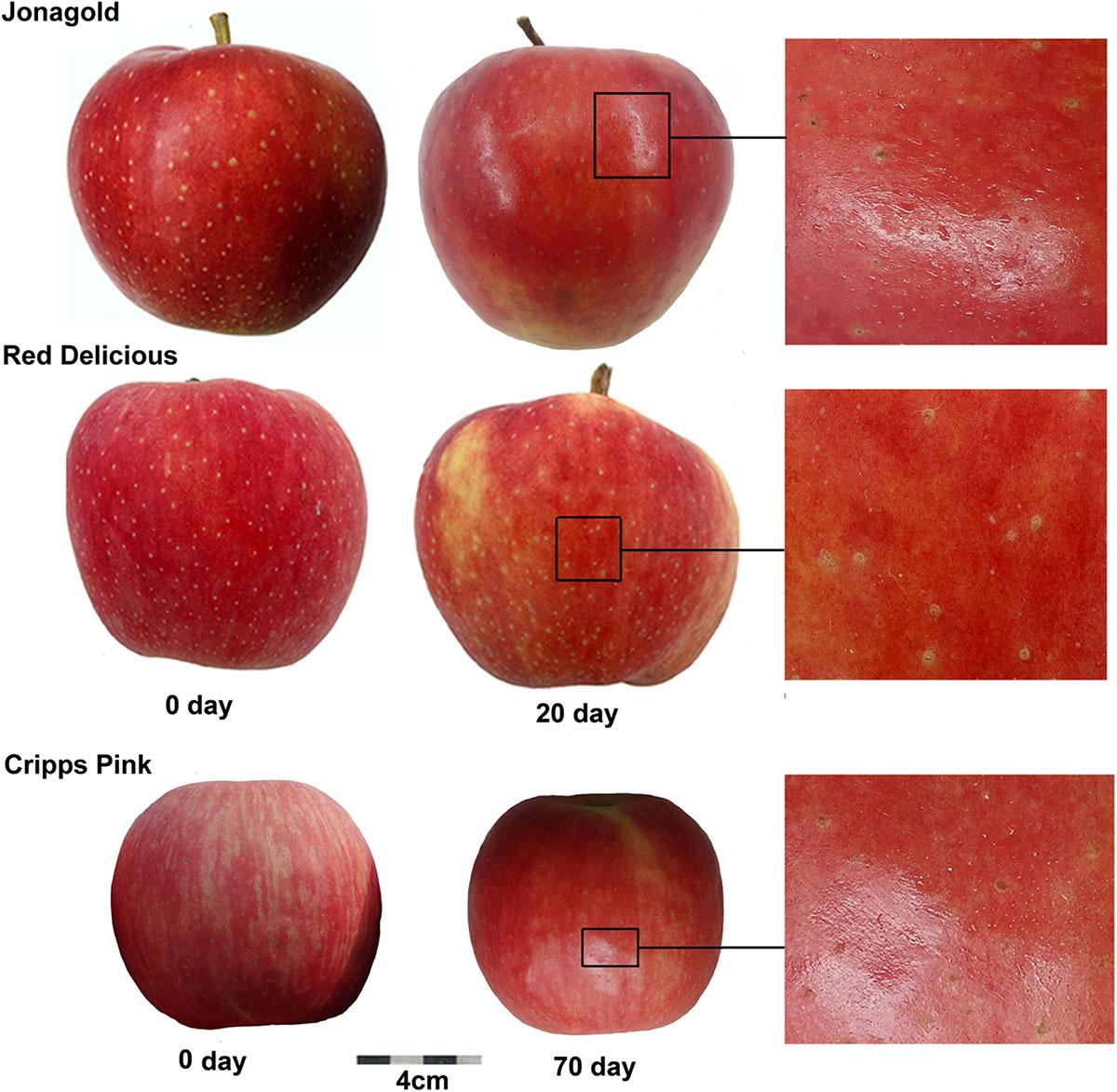Greasiness in apples: Why it happens and how to prevent it
What is apple greasiness?

When one examines an apple, they may notice a shiny, glistening appearance on the surface of an apple that is not appealing to the consumer. This shiny appearance is associated with the skin disorder of “apple greasiness” (Fig. 1). Apple greasiness develops at any time from apple harvest and during postharvest storage and it corresponds to a natural coating of ‘wax’ produced by the apple itself. The surface of the apple can even become slippery to touch. Apples are covered on the outside of the skin (epidermis) by waxy-cuticle layers that have the role of minimizing water loss, limiting pathogen infection, protecting against ultraviolet (UV) light, acting as a self-cleaning surface, providing mechanical support, and preventing fruit cracking. While different apple cultivars possess different compositions of cuticular wax, they all behave in the same manner: to protect and maintain the shelf-life of the apple.
Apple greasiness begins to develop when the apple ripens, as the ethylene (which plays a key role in controlling ripening) that is produced changes the waxes in the epidermis of the apple from a solid to a liquid state by melting part of the components of the waxy layers (esters). Therefore, when stored, apples may produce a greasy coating at an increased rate. This greasiness effect can be understood as the over-ripening of an apple, thus once the disorder appears it is a sign that the remaining shelf life of the apple is short. Apple greasiness is an undesirable quality trait at the retail shelves.
Factors that contribute to apple greasiness and how to prevent it
In general, there are several factors that can influence the development of greasiness in apples as well as help to prevent it. Some of these include:
Genetic background, it has been reported that some cultivars are more prone to developing greasiness than others (Fig. 1). Jonagold, for example, are susceptible to developing greasiness on their outer layer. They were found to develop greasiness when stored at 68°F within 20 days. Similarly, Granny Smith and Honeycrisp cultivars are shown to be susceptible to greasiness. On the other hand, Red Delicious does not develop much greasiness. It has been reported that Cripps Pink Cultivar had a slow rate of greasiness compared to Jonagold, however, still developed grease.
Stage of maturity at harvest also plays a critical role in apple greasiness. It has been shown that delaying harvest (which is many times done in the mid-Atlantic to obtain the required red skin coloration) will promote greasiness development in storage. It is of crucial importance to perform maturity assessments of your fruit and harvest them at their optimum maturity, to avoid the development of disorders such as greasiness.
The environmental conditions in which the fruits are growing can also affect the incidence of greasiness on apples, due to the seasonal variation that can occur between different years. It is important to be aware that seasonal variation can affect apple fruit and tree physiology, altering maturity stages and ripening rates. Again, the importance of conducting maturity assessments of your fruit every year becomes a key factor to avoid harvesting fruit too late in the season.
Use of plant growth regulators, pre- and postharvest, that decrease ethylene production (ReTain® (active ingredient: Aminoethoxyvinylglycine (AVG), Valent USA) as well as ethylene perception (HarvistaTM and SmartFreshTM,active ingredient: 1-Methylcyclopropene (1-MCP), AgroFresh) have shown to also have positive effect in decreasing apple greasiness. The delayed maturity that results from the use of these plant growth regulators, at pre- and postharvest, has shown to decrease greasiness development.
Finally, maintaining a balanced orchard in terms of nutrition, crop load and vigor will allow having a uniform crop, stabilize maturity and avoid the development of disorders such as greasiness, particularly in the more susceptible cultivars.
This article appears in Volume 15, Issue 3 of the Vegetable and Fruit News.
Vegetable and Fruit News is a statewide publication for the commercial vegetable and fruit industries and is during the growing season from April through October. Subscribers will receive an email with the latest edition.
Subscribe